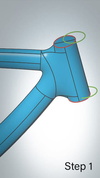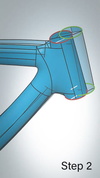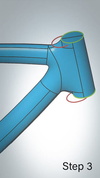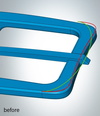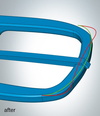hyperMILL® Deformation:
Targeted Deformation of Geometries
The Deformation module
The Deformation module of the CAD system in hyperMILL® (formerly hyperCAD®-S Deformation) offers CAM programmers a range of options to deform geometries according to particular specifications.
hyperMILL® Deformation allows the CAM user to deform any geometry according to particular specifications, whether it is curves, meshes, or surfaces. This powerful Deformation module allows the CAM user to modify global and local component areas in a way that would be very costly using traditional modeling techniques.
A broad range of applications
hyperMILL® Deformation can be used in diverse applications such as sheet metal tooling and turbine blades. Metal sheets spring back after deformation. This springback effect is compensated for by overbending the tools, resulting in an accurately measured sheet metal tool.
Compressor and turbine blades can deflect during milling. Therefore, the CAM user needs to deform the geometry in the opposite direction and program to the deflected geometry, so that the actual part can be machined within defined tolerances.
Features of hyperMILL® Deformation
- Fast and simple method to achieve required end geometry
- Deformation of elements
- Volumetric deformation





